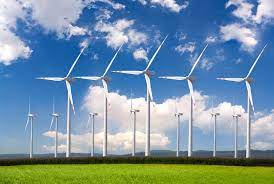As man’s population as well as his level of development has increased, so has his level of discharges to the environment with an accompanying cost to his environment and to public health. There is increasing pressure for all, especially businesses to reduce their discharges.
At the Earth Summit in Rio de Janeiro, in 1992, waste management was discussed with the aim of minimizing waste, maximizing environmental sound waste reuse, recycling and disposal as elimination is currently unrealistic. New technologies are currently evolving to reduce waste at the design phase
While one can differentiate between technology which concentrates on prevention (clean technology- used to set objectives and target and establish an environmental management programme), and technology which is used as control (waste minimization-used in operational control) waste minimization and clean technology are often used synonymously, and we shall do the same in this section.
Clean technology focuses on the prevention of waste and pollution, the minimization of energy consumption and conservation of raw materials.
Development of Clean Technology
Clean technology developed as a result of the realization that increasing demand for and use of non-renewable resources is unsustainable as result of depleted resources, increased by products of production and consumer waste.
There was increased pressure to maximize production efficiency and reduce waste. Waste management is not a new concept and many companies had used waste minimization measures e.g. reuse, recycle for years for financial reasons.
The Science Advisory Board in America (1988) advocated the need to reduce or prevent pollution at source. In the EU the 1991 Framework directive on Waste contains an obligation to reduce waste by cleaner technologies, waste recovery and recycling.
Hierarchy of Waste Management

The EU has developed various directives on waste resulting in a change in thinking from waste disposal to waste management and minimization
Definitions
Clean technology is the production of goods and services withoutdetectable environmental impact. As this is unattainable the term cleaner technology is sometimes used.
Cleaner technology is the design and manufacture of intrinsically clean products by intrinsically clean processes.
Cleaner production is the conceptual and procedural approach specific to production which demands that all phases in the life cycle of the a product or process should be addressed with the objective of prevention or minimization of short and long term risks to human health and the environment.
Read Also : Issues in Wastewater Reuse and Recycling, and the Future of Water Reuse
Cleaner products are products whose production has a conceptual and procedural approach which demands that all phases in the life cycle of the product should be addressed with the objective of prevention or minimization of short and long term risks to human health and the environment.
Waste minimization is concerned with improvements to existing activities; that is reduction of waste at source and with recycling.
Benefits of Clean Technology
Increased Profit as a result of a marketing edge leading to more sales, waste cost savings cost of raw materials and reduced storage and disposal costs.
Improved process efficiency as result of constant review of production process and technologies
Reduced environmental liability due to reduced risks to the environment, health and safety.
Reduced environmental impact as clean technologies usually focus on type, amount and how toxic the discharge is.
Improved Stakeholder relations since shareholders, staff, and regulators have increased confidence in the organization
Important Elements in the Implementation of Clean Technology
Total Organizational Commitment
Organizational commitment is important for implementation and must be demonstrated by:
A statement of organizational policy
A strategy for implementation with allocation of a manager
Training of all staff
Barriers to organizational commitment include:
Economic barriers due to insufficient resources
Technical barriers due to lack of knowledge and expertise
Regulatory barriers if regulations are cumbersome
Cultural barriers due to lack of top management commitment, low awareness and poor communication.
Resistance to change due to fear
Clean technology and Waste minimization techniques
Waste minimization techniques consist of waste reduction at source (the better option) and recycling.
Waste reduction at source
Good Housekeeping i.e. good operating practice in existing activities such as
Maintenance
Training
Control procedures
Technological Changes which covers equipment and process modification
Retrofitting where exiting equipment and processes are modified cleaner processes where processes are designed to minimize waste and pollution
Input Material Changes is the replacement of potentially hazardous material inputs with less or preferably non- hazardous inputs reducing the impact.
Product Changes involves altering the product to reduce waste in manufacture, use and disposal.
Recycling
a. Re-use within the same process as substitutes for virgin material inputs
Re-use as raw material for another product
Reclamation sort through waste and use as raw material or sell
Treatment and Disposal
Treat all discharges as effectively as possible and dispose
Methodology of Clean Technology

Uses of Clean Technology in EMS
Clean technology results in the quantification of inputs and outputs associated within an organization to establish a baseline
Clean technology helps to identify areas where improvements are necessary
Clean technology helps to identify possibilities for the redesign of products and processes thus reducing environmental impact the main aim of an EMS
Clean technology helps to reduce waste, pollution, resource consumption thus minimizing environmental health and safety risks
Clean technology helps in the identification of significant environmental aspects
The process of clean technology is cyclical and similar to the EMS
Clean technology can help to offer solutions for areas with problematic environmental implications.
Read Also : Waste Recycling and Disposal Guide
In conclusion,clean technology is an important tool in EMS. It has its roots in waste management but focuses on the prevention of waste and pollution, the minimization of energy consumption and conservation of raw materials.
Clean technology in the strictest terms is the production of goods and services without detectable environmental impact.
Clean technology benefits the organization by increasing profit, improving process efficiency, reducing environmental liability, reducing environmental impact and improving stakeholder relations.
Clean technology requires total organizational commitment and entails waste minimization at source and recycling methods.

